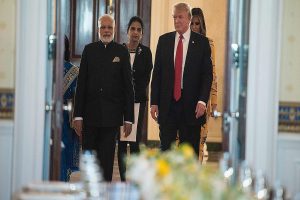Prime Minister Shinzo Abe, in his address to the Diet upon being re-elected to the office on 1 November, emphasised that one of the urgent tasks facing his Cabinet is tackling the low birth rate.
To address this issue, he proposed boosting day care capacity enough to handle 320,000 more children, thereby reducing the national waiting list for nurseries to zero, by the end of fiscal 2022. Moreover, the government plans to craft a policy package that will include free early childhood education.
Advertisement
Will these policies work to address Japan’s low birth rate? The answer, most likely, is “no.”
Even though the envisaged number of 320,000 new day care slots sounds impressive, it probably won’t be enough. Nomura Research Institute estimates that the government needs to create 880,000 new places by 2020 to meet Abe’s target of raising the female labour force participation rate to 77 per cent.
Without an adequate number of day care slots, the offer of free day care won’t mean much. If there isn’t enough room in preschools, mothers will still need to stay away from the workforce for a prolonged period.
But even reaching the target of 320,000 new day care slots will be a very challenging undertaking. Japan suffers from an acute shortage of labor. Jobs in day care centres pay on average ¥220,000 (Rs 1.24 lakh) per month. Given the demanding nature of the work, many job seekers decide to find employment in other fields. The number of foreign workers that have sufficient education and language skills is still far too low. An adequate provision of child day care facilities will thus remain elusive. What else can be done?
Other developed countries facing similar problems in providing enough day care facilities have come up with interesting solutions.
In France, where in many cities it is also very competitive to get a place in a certified day care centre, the government developed a system using various models. One is la creche familiale, in which a professional nanny is hired to look after a number of families’ children in one home, with the costs divided between all of the families.
Another popular option in France is to employ a baby sitter or au pair, so that a young person, often foreign, lives with a family and performs chores and child care.
In contrast, the number of options in Japan is very limited. An anonymous Japanese blogger’s post stating “I couldn’t get day care — die Japan!” caused a nationwide social furore. It shed light on the severe situation that faces working mothers with small children. The government should consider how alternative models widely used in other countries, such as baby sitters or family creches, can be made accessible to families with small children in Japan.
Another challenge of child rearing in Japan is the low involvement of men. Mothers typically take on all child care tasks as well as the domestic chores, even if they have a full-time job. In Japan this is called “One operation child care.” The nation has a generous system of paternity leave in place that allows men to take up to 52 weeks of leave, the second-longest period among OECD countries next to South Korea. However, only a tiny minority of fathers take advantage of the system — just 3.16 per cent in 2016, according to the Health, Labour and Welfare Ministry.
One reason is that taking paternity leave is not well regarded by many companies. Furthermore, the extremely long working hours that companies typically give men leaves few options to be involved in child care or help with domestic chores. As a consequence, women are typically required to abandon their professional career in order to take care of their kids.
In many European countries, more flexible systems have been successfully introduced. For example, in the Netherlands it is common for both members of a couple to work less than 100 per cent and thus share child-rearing tasks. In Japan, companies should be encouraged to create a family-friendly work environment where raising children is not seen as a burden on the company, but rather an important contribution to society, and thus reward their employees with more flexible work arrangements.
The Abe administration touts greater female labour participation as a way to address the aging society and shrinking population. However, without confronting all three fronts mentioned above, it will be impossible to achieve the goal. This is one of the emerging issues that not only the government but also the country as a whole has to take more seriously. Otherwise, there will be no bright future for Japan.
The Japan Times/ANN.











